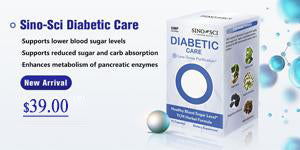Introduction to Diabetes
Type I diabetes is caused by a loss or malfunction of the insulin producing cells, called pancreatic beta cells. Damage to pancreatic beta cells results in an absence or insufficient production of insulin produced by the body. Most cases of type I diabetes have an autoimmune basis, and the immune system mistakenly attacks and destroys beta cells. Since insulin is necessary to sustain life, the missing insulin has to be replaced. The replacement insulin is administered by injection using a syringe or an insulin pump, which delivers the insulin subcutaneously.
There are multiple theories about the underlying causes of type I diabetes, including autoimmunity, virus infection, susceptibility genes and environmental factors.
Type I diabetes have two subtypes: type 1A and type 1B. Type 1A diabetes is induced by autoimmune deficiency of pancreatic beta cells. This process generally occurs to individuals with genetic susceptibility, which might be caused by one or a few environmental factors, and usually develops within months or years, during which time the individual might have no symptoms and stay at normal blood sugar levels. Different from type 1A diabetes, type 1B diabetes is an unusual form of phenotypic type I diabetes with almost complete insulin deficiency but no evidence of autoimmunity, and is mainly reported in Africa and Asia.
https://www.hopkinsguides.com/hopkins/view/Johns_Hopkins_Diabetes_Guide/547038/all/Diagnosis_and_Classification_of_Diabetes
You have Type II diabetes if your tissues are resistant to insulin, and also you lack enough insulin to overcome this resistance. Type II diabetes is the most common form of the worldwide diabetes and accounts for 90-95% of cases. Your risk of type II diabetes typically increases when you are being older, being less active physically, and being overweight or obese. Because there is a wide range of genetic causes, there is varies how patients will respond to the treatments. Some may be easily treated with just a change in diet, and others may need multiple types of medication.
Insulin resistance in type II diabetes means the signal insulin gives to a cell is weakened. This results in less glucose uptake by muscle and fat cells and a reduction in insulin mediated activities inside cells. Besides this problem of resistance, there is additional defect in insulin production and secretion by the insulin producing cells, the pancreatic beta cells.
Although both type I and II diabetes are serious conditions, as high blood glucose levels can lead to serious health complications in either of them, they have different mechanisms and you need to take the right steps for diabetic management.
In terms of Type I diabetes, your body attacks the pancreatic beta cells to completely destroy their insulin production ability, and the symptoms appear more quickly. To manage it, you need to take exogenous insulin for blood sugar control. Currently, there is no cure for Type I diabetes, but research is still going on.
Type II diabetes means an inadequate amount of insulin produced by and an inappropriate way of insulin function in the human body. There are risk factors such as weight and ethnicity that can contribute to the Type II diabetes. Compared to Type I diabetes, Type II diabetes has slower rates of symptom appearance, and you can manage Type II diabetes in more ways than Type I, including medication, exercise and diet. Though also lacking a current possibility of being cured, prevention and remission of Type II diabetes is possible according to recent studies.
From: www.diabetes.org.uk
Chronic complications, i.e. long-term problems with gradual development which can cause serious consequences without being taken care of, include retinopathy (affecting eyesight), foot problems (damaged circulation and slower healing rates of sores and cuts in the feet), heart attack and stroke (damaged blood vessels), nephropathy (as it becomes more difficult to clear extra fluid and waste from your body), and neuropathy (as it becomes more difficult to carry messages between the brain and every part of your body, thus affecting sensation and motion).
There are also acute complications that can happen at any time and may lead to chronic complications, including hyperosmolar hyperglycaemic state (HHS), which is brought on by severe dehydration and very high blood sugars; and diabetic ketoacidosis (DKA), which is a life-threatening emergency as insulin insufficiency and high blood sugars lead to a ketone build-up.
As diabetic complications are affecting every part of your body and are inevitable, you need to reduce your risk of developing complications via good blood sugar, blood pressure and blood fat controls.
Overall principle:
Control overall calories uptake and balance multiple nutrition contents.
Ultimate goal:
Maintain ideal blood sugar levels; reduce cardiovascular risk factors, such as abnormal blood fat and hypertension; provide diet with balanced nutrition contents; and maintain reasonable body weight.
Detailed methods:
Take more healthy carbohydrates, including fruits, vegetables, whole grains, beans and low-fat milk;
No more than 20g (2 spoons) oil or fat per day;
Limit food of high saturated fatty acids or cholesterol level, such as fatty meat or egg yolk, and less than 300mg cholesterol uptake per day;
Have 2-4 times of fish every week, but fried fish is not suggested;
Limit food of high calories and low nutrition contents.
Daily uptake of salt should be no more than 5-6g, especially for hypertension patients;
Both alcohol and tobacco use should be prevented, especially for pregnant women, children and adolescents.












